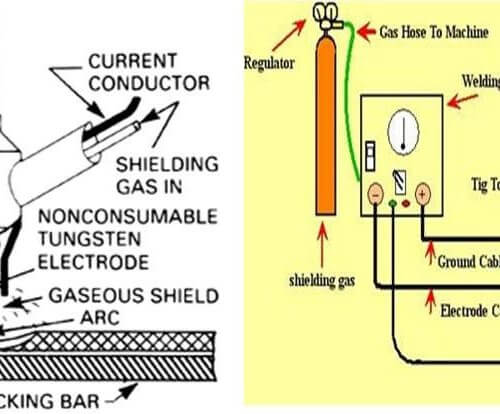What Does
Tungsten Inert Gas Welding (TIG) Mean?
Tungsten inert gas (TIG) is a process that uses an external gas supply and non-consumable tungsten electrode to produce an arc that melts the filler wire and fuses the metal to be welded.
Gas tungsten arc welding is also known as gas tungsten arc welding (GTAW) welding.
Corrosionpedia Explains Tungsten Inert Gas Welding (TIG)
TIG equipment consists of:
- Welding torch
- Welding power source
- Source of inert gas with suitable pressure regulators and flow meters
- Welding face shield
- Protective clothing
Filler metal is supplied from a welding wire, because the tungsten electrode is not consumed in this operation. A constant and stable arc gap is maintained at a constant current level. A gas shield protects the electrode and the molten weld pool, and provides the required arc characteristics. The shielding gas is usually argon or helium, or a mixture of the two.
TIG is used for a wide variety of metals and applications, particularly:
- Aluminum
- Copper
- Brass
- Magnesium
- Titanium
- High alloy metals
It is especially suited for thin metals.

Advantages of TIG welding:
- Concentrated arc permits pinpoint control of heat input to the workpiece
- No need for flux with this process, therefore no slag to obscure the welder’s vision of the molten weld pool
- No sparks or spatter
- Free of contaminants
- Little smoke or fumes
- Welds more metals and metal alloys than any other arc welding process
- Good for welding dissimilar metals together
Disadvantages of TIG welding:
- Slower travel speeds than other processes
- Lower filler metal deposition rates
- Brighter UV rays than other processes
- Higher equipment costs than other processes
- Concentrations of shielding gas may build up